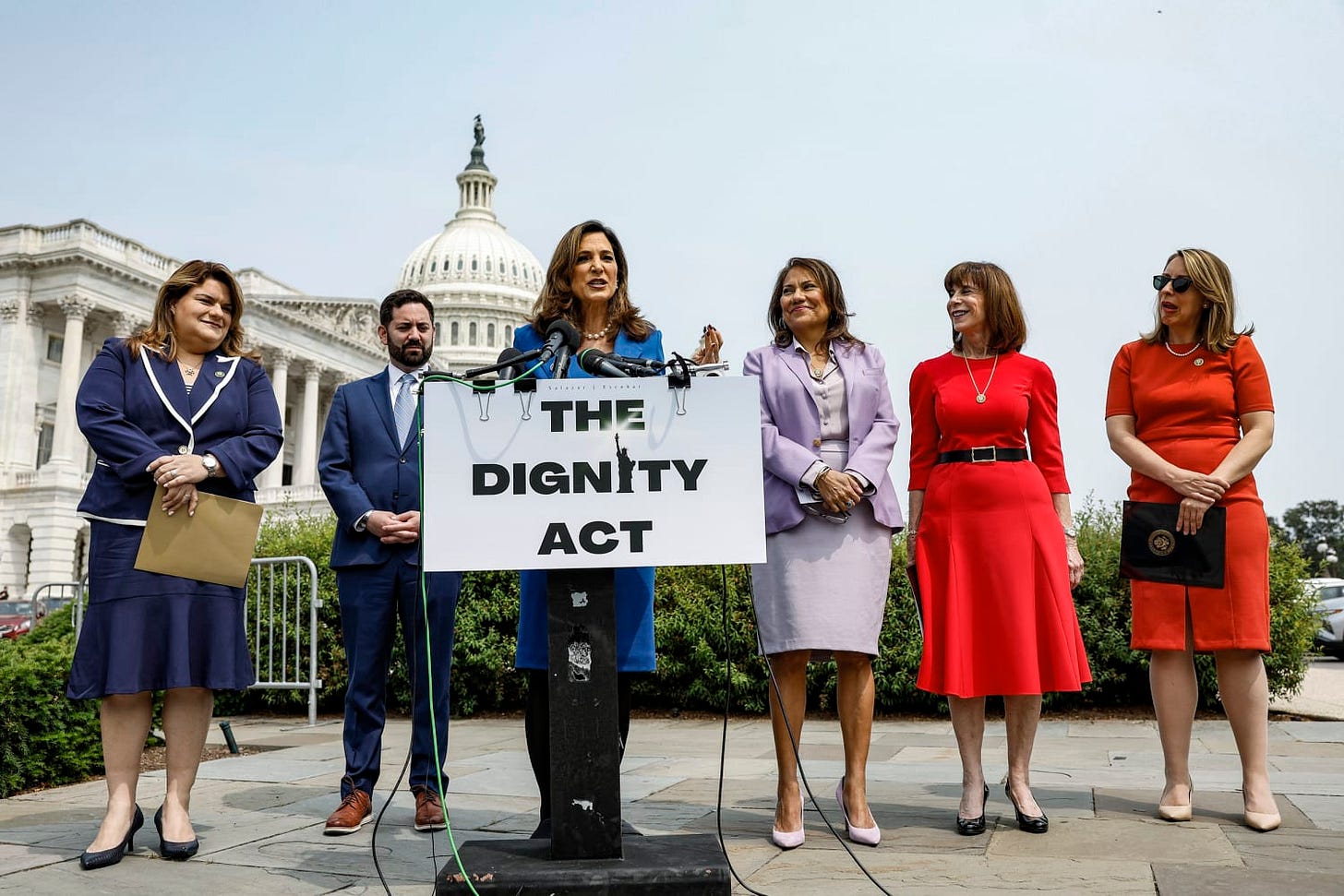What Is The Bipartisan “Dignity Act”?
Beyond individual status, the Dignity Act takes aim at the backlog of legal immigration cases.
In a political climate where immigration is often a flashpoint, a bipartisan group of lawmakers is trying to bridge the divide with the Dignity Act of 2025.
Introduced by Republican Rep. María Elvira Salazar of Florida and Democratic Rep. Veronica Escobar of Texas, the bill seeks to overhaul the U.S. immigration system with a combination of tougher border security and legal pathways for undocumented immigrants.
The Dignity Act is split into three major sections. The first focuses on strengthening border enforcement. The bill calls for more resources at the southern border—including physical barriers, surveillance technology, and additional personnel. It also sets a strict timeline of 60 days for processing asylum claims and proposes the creation of government-run humanitarian centers for handling migrant arrivals.
Perhaps the most controversial—and innovative—part of the bill is the introduction of the “Dignity Program.” This would allow undocumented immigrants who have lived in the U.S. since before January 1, 2021, to earn legal status.
To qualify, they would need to pass background checks, pay thousands in fees over several years, and agree not to seek citizenship. In exchange, they would be protected from deportation and could legally work and travel.
The bill also addresses the long-standing debate over so-called “DREAMers”—young people brought to the U.S. as children without legal documentation. Under the proposed law, those who meet specific education, work, or military service requirements and pass background and civics checks could apply for permanent residency.
Beyond individual status, the Dignity Act takes aim at the backlog of legal immigration cases, some of which leave families waiting over a decade. The bill proposes streamlining these processes by increasing the number of available green cards and adjusting country caps that have long favored some nationalities over others.
It also updates visa rules for foreign workers and students, allowing more flexibility and clearer paths to legal employment.
To fund the various components of the bill—including new border infrastructure, asylum processing, and job training for American workers—the Dignity Act relies on fees paid by program participants, rather than tax increases. These would come from work permit fees, visa surcharges, and contributions tied to wages.
While the bill includes measures to create legal channels for immigrants, it also tightens enforcement. Penalties would increase for repeat illegal entry and asylum fraud. The Department of Homeland Security would be given greater authority to speed up border-related construction and enforcement actions.
Supporters of the bill argue that it offers a practical, humane solution to a problem that has stalled in Congress for decades. “This is not amnesty,” Rep. Salazar said. “It’s dignity through accountability.”
Critics, however, question whether the bill’s restrictions on citizenship go too far or if its border enforcement efforts will be effective without broader international cooperation.
Whether the Dignity Act can make it through a divided Congress remains to be seen. But with immigration continuing to dominate headlines and polls, this proposal is being seen as one of the more comprehensive and politically viable efforts in years.
For now, the Dignity Act represents a rare attempt at compromise—balancing national security concerns with the realities faced by millions living in legal limbo.




